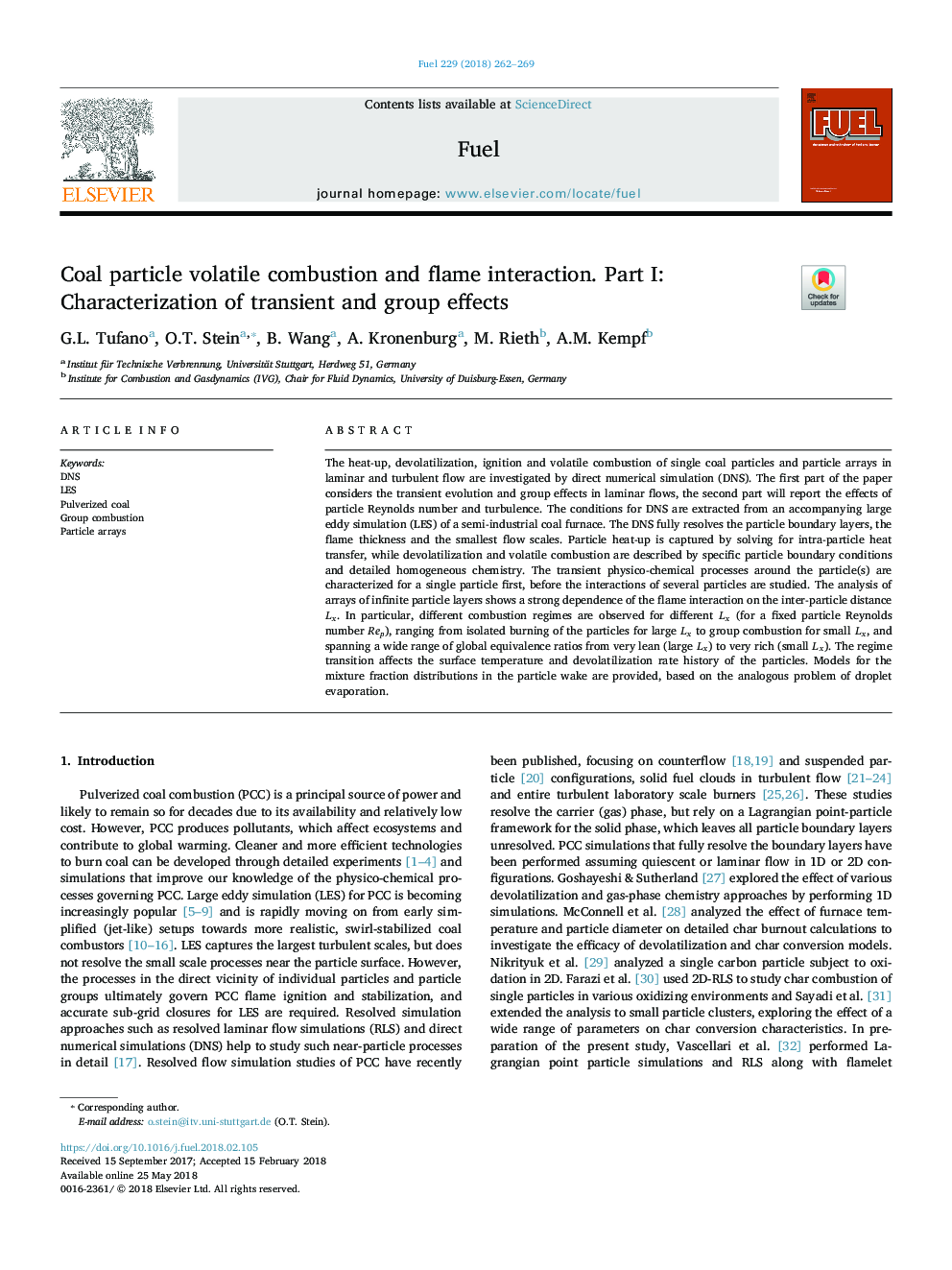| Article ID | Journal | Published Year | Pages | File Type |
|---|---|---|---|---|
| 6630701 | Fuel | 2018 | 8 Pages |
Abstract
The heat-up, devolatilization, ignition and volatile combustion of single coal particles and particle arrays in laminar and turbulent flow are investigated by direct numerical simulation (DNS). The first part of the paper considers the transient evolution and group effects in laminar flows, the second part will report the effects of particle Reynolds number and turbulence. The conditions for DNS are extracted from an accompanying large eddy simulation (LES) of a semi-industrial coal furnace. The DNS fully resolves the particle boundary layers, the flame thickness and the smallest flow scales. Particle heat-up is captured by solving for intra-particle heat transfer, while devolatilization and volatile combustion are described by specific particle boundary conditions and detailed homogeneous chemistry. The transient physico-chemical processes around the particle(s) are characterized for a single particle first, before the interactions of several particles are studied. The analysis of arrays of infinite particle layers shows a strong dependence of the flame interaction on the inter-particle distance Lx. In particular, different combustion regimes are observed for different Lx (for a fixed particle Reynolds number Rep), ranging from isolated burning of the particles for large Lx to group combustion for small Lx, and spanning a wide range of global equivalence ratios from very lean (large Lx) to very rich (small Lx). The regime transition affects the surface temperature and devolatilization rate history of the particles. Models for the mixture fraction distributions in the particle wake are provided, based on the analogous problem of droplet evaporation.
Related Topics
Physical Sciences and Engineering
Chemical Engineering
Chemical Engineering (General)
Authors
G.L. Tufano, O.T. Stein, B. Wang, A. Kronenburg, M. Rieth, A.M. Kempf,
